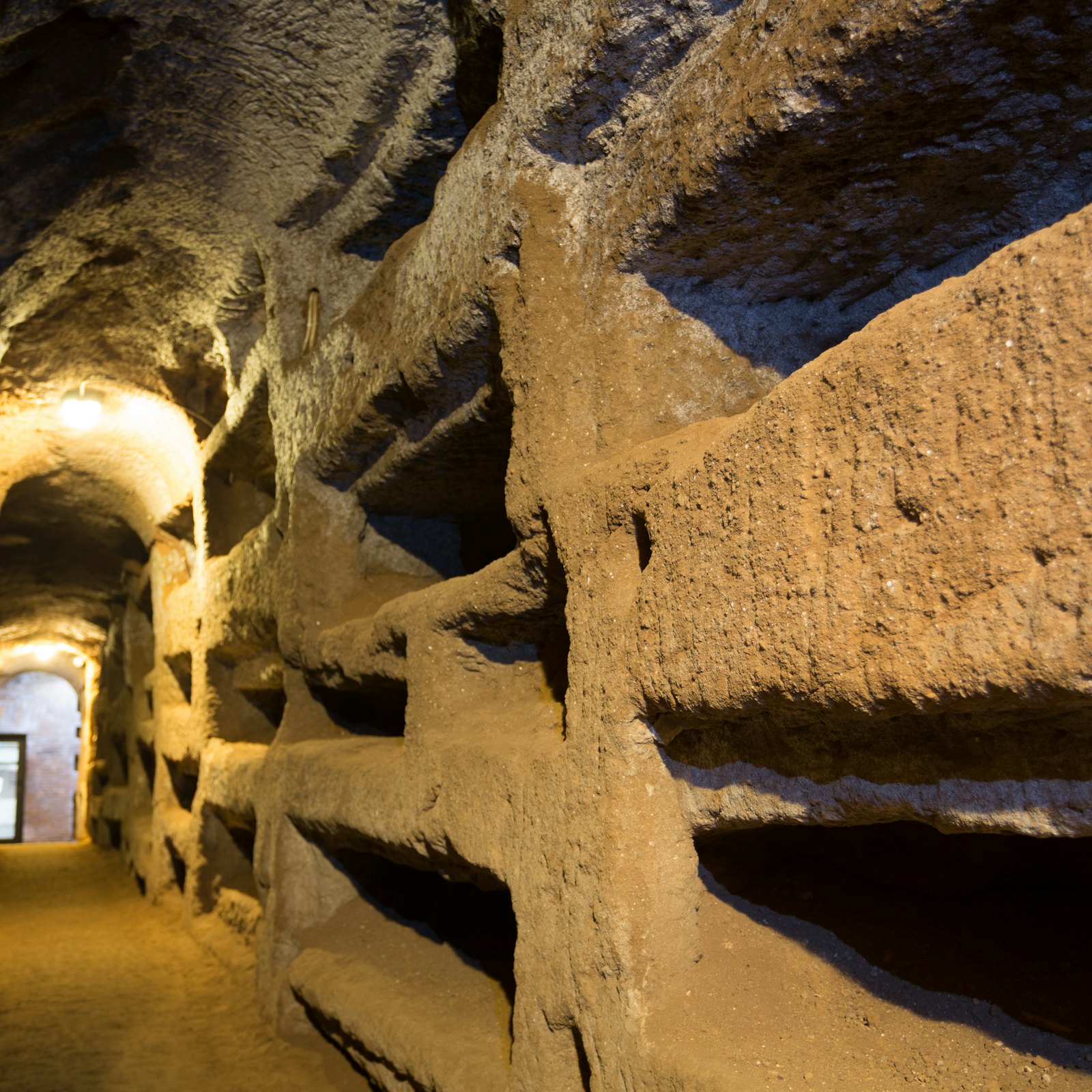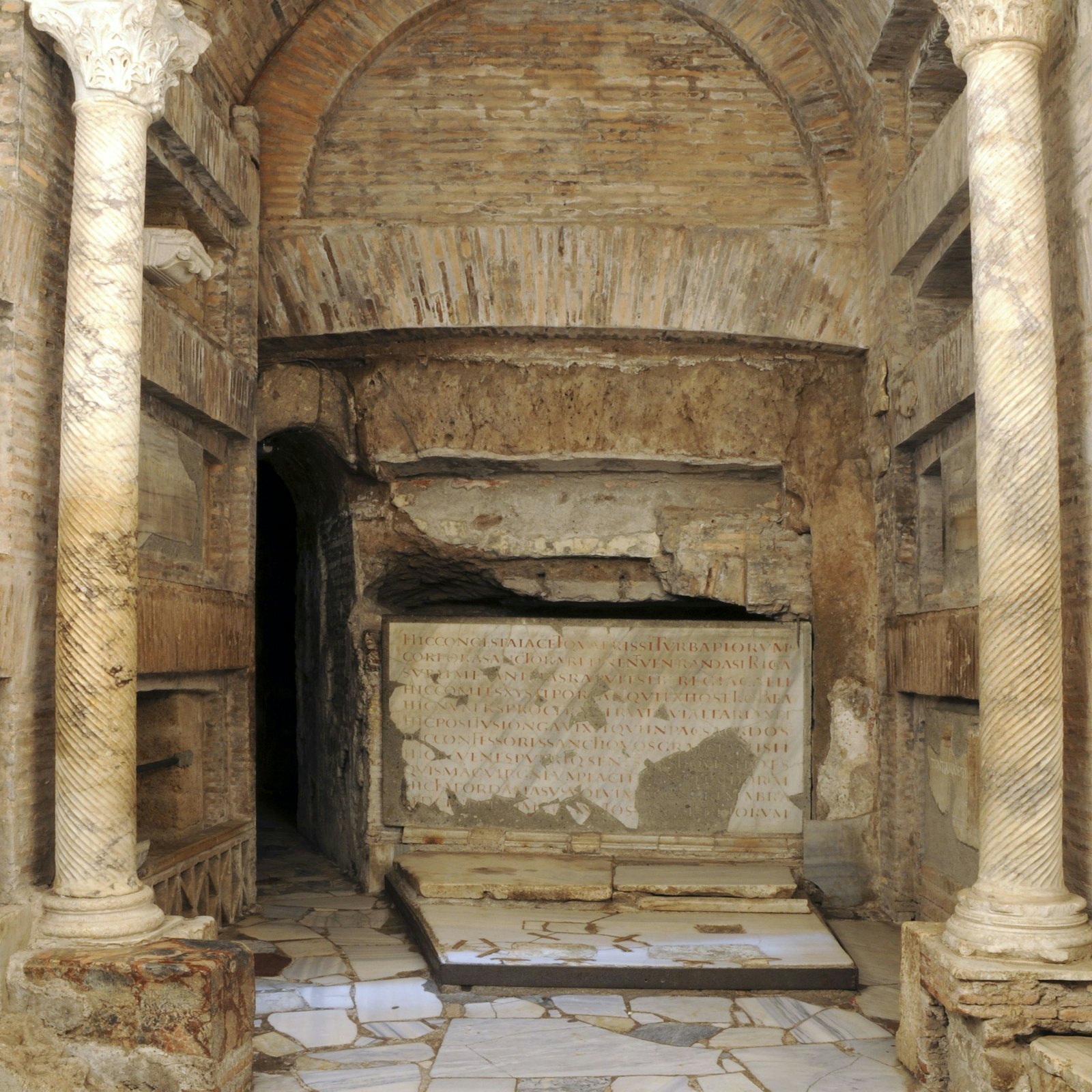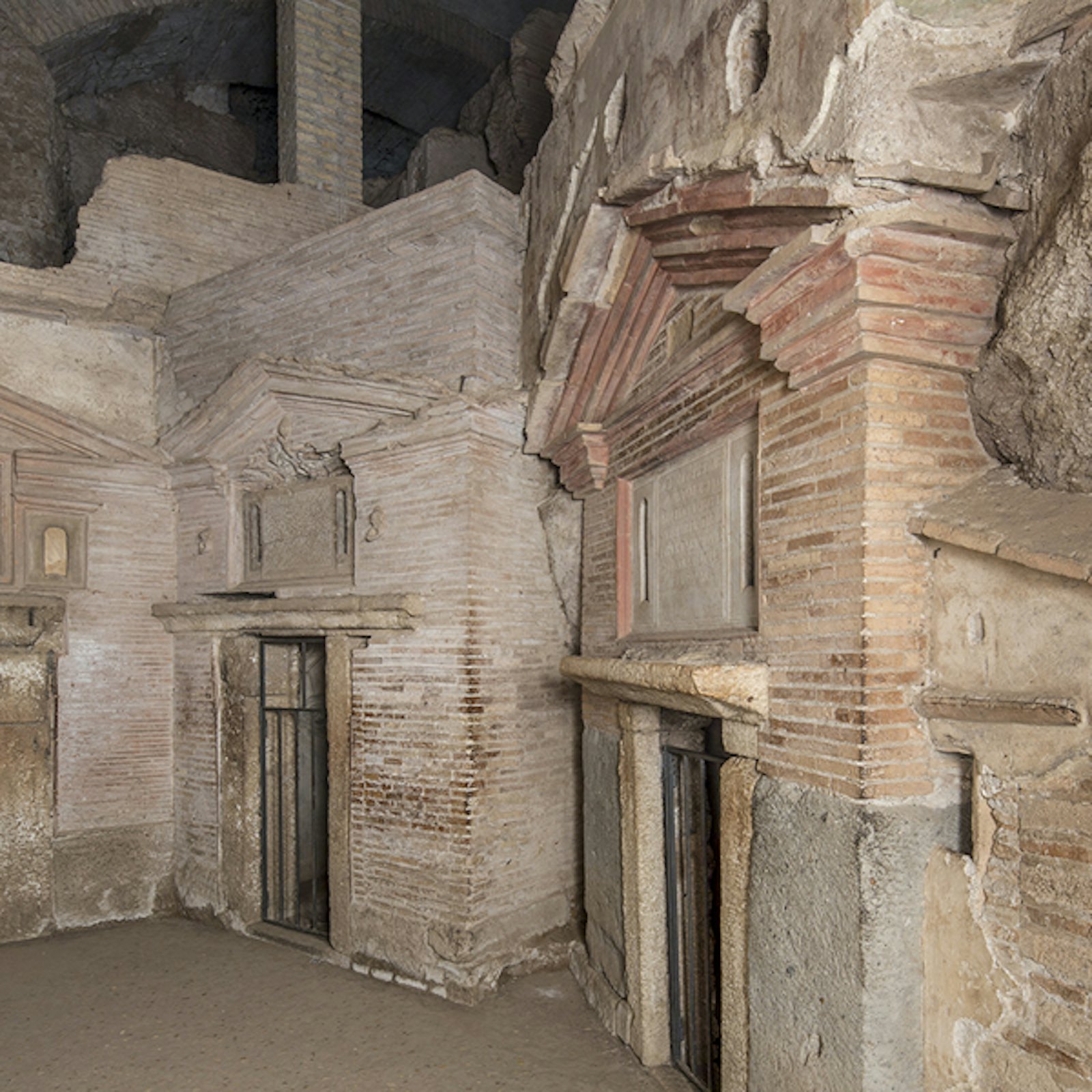Catacombs of Saint Callixtus: Entry Ticket
See some of Rome's most important catacombs
- Catacombs of St. Callixtus: Entry Ticket
- 40-minute Guided Tour

Discover Rome's Catacombs & Underground
Beneath the streets of Rome lies a hidden world: the mysterious catacombs and underground passages. Dating back to around the 2nd century AD, these labyrinthine tunnels were primarily created as burial sites, as Roman law prohibited burials within the city walls. Consequently, Christians, Jews, and some pagans used this subterranean network for interment. Additionally, the catacombs served as clandestine meeting places for early Christian communities to celebrate mass away from persecution. Today, these catacombs and underground areas are popular tourist attractions, drawing visitors from around the globe who seek to explore these fascinating historical sites and uncover their ancient secrets.
{{ticket-block-triple}}
Some of the most popular Catacombs and Underground areas of Rome are:
Catacombs of Saint Callixtus - Guided Tour Ticket
BESTSELLER
What's Included
- Catacombs of St. Callixtus Entry Ticket
- 40-minute guided tour (English, French, German, Italian & Spanish)
Probably one of the most famous of the Rome catacombs. Located along Appian Way, where the first sites were found. This catacomb was named after Pope Callixtus, the catacombs are amongst the most extensive catacombs in Rome.
Here you will discover were ancient Popes are buried along with hundreds of thousands of Christians, Jews and pagans. The guided tour of the Catacombs of Saint Callixtus will take you to the most intriguing areas of the catacombs where around 500,000 bodies were laid to rest. Your guide will show you the symbols that were carved into the stone and explain the meanings behind them.
Priscilla Catacomb - Guided Tour Ticket
What's Included
- Catacombs of Priscilla Entry Ticket
- 45-minute guided tour ((English, Italian, Spanish)
The Catacombs of Priscilla are on 'Via Salaria' and its believed they were used between the 3rd to the 5th century AD. This catacombe is famous for frescoes and the 'Greek Chapel', which is where the earliest known images of Madonna and Child were found!
Catacombs of San Sebastiano - Guided Tour Ticket
What's Included
- Catacombs of San Sebastiano Entry Ticket
- 30-minute guided tour
The Catacombs of San Sebastiano are also on Appian Way. They were dedicated to Saint Sebastian, a Christian martyr, and he is also buried there. These Catacombs are full of delicate frescoes which celebrate the life of Saint Sebastian and the other early Christian martyrs that are buried there with him.
Previously used as a quarry for pozzolana which was a type of stone that engineers used to mix with mortar and concrete to strengthen it, but then converted to Catacombs.
Piazza Navona Underground - The Stadium of Domitian Tickets
What's Included
- Stadium Domitian Entry Ticket
- A physical guide that needs to be collected at the ticket office together with the ticket
The Piazza Navona -The Stadium of Domitian is a UNESCO World Heritage Site and the first permanent venue for Rome's competitive athletics competitions!
Believed to have been commissioned in 80 AD by Emperor Titus, The Stadium Domitian offers an insight into history. The stadium could sit up to 20,000 spectators and was even host of a gladiator battle after a fire at the colosseum. The stadium was also sometimes referred to as the 'Circus Agonalis' and would host fights, gymnastics and running races, amongst others.
Capuchin Crypt - Guided Tour Tickets
What's Included
- Capuchin Crypt Entry Ticket
- 45-minute guided tour
- English-speaking guide
The Capuchin Crypt is under the 'Santa Maria della Concezione dei Cappuccini' and has skeletons of Capuchin friars. A guided tour will explain some of the history.
Trevi District Underground: Aqueduct & Domus Guided Tour Tickets
What's Included
- Trevi District Underground Entry Ticket & Reservation
- 45-minute guided tour in English or Italian
Most know the famous and beautiful 'Trevi Fountain' but what they may not realise is what lies beneath! The Trevi District Underground and Vicus Caprarius. An amazing archaeological site with Imperial-era relics and an underground ancient building complex that you would never know existed!
Popular Tickets
Popular Attractions
Rome Catacombs Interesting Facts
- Early Christian Burial Sites: The Catacombs of Rome were primarily used as burial sites by early Christians from the 2nd to 5th centuries AD. Christians preferred burial over cremation due to their belief in the resurrection of the body.
- Extensive Network: The catacombs form an extensive underground network that stretches for nearly 150 miles (about 240 kilometres) beneath Rome! There are over 60 known catacombs, with more still potentially undiscovered.
- Thousands of Tombs: The catacombs contain hundreds of thousands of tombs. Some estimates suggest that around 500,000 to 750,000 individuals, including many martyrs, were buried in the underground chambers.
- Symbolic Art: The walls of the catacombs are covered with early Christian art, including frescoes, symbols, and inscriptions. Common symbols include the fish (Ichthys), the anchor, and the Good Shepherd, which represent Christian faith and hope.
- Martyrs’ Resting Place: The Catacombs of San Callisto house the remains of several popes and martyrs, making it an important pilgrimage site.
- Secret Worship Sites: During periods of persecution, Christians are believed to have used the catacombs not only for burials but also as places of worship and refuge, though evidence of regular worship is limited.
- Rediscovery in the 16th Century: The catacombs were largely forgotten after the 9th century. It was only in the 16th century that they were rediscovered by Antonio Bosio, an Italian archaeologist, who earned the title "Columbus of the Catacombs."!
- San Sebastiano and San Callisto: The Catacombs of San Sebastiano and San Callisto are among the most famous. San Callisto is known for the "Crypt of the Popes," while San Sebastiano is associated with the early Christian martyr, Saint Sebastian.
- Not Just Christian: While most famous for their Christian burials, some catacombs were also used by Jews and pagans. The Catacombs of Vigna Randanini, for example, were used by the Jewish community in ancient Rome.
Useful Information About Rome Catacombs
Tips for Visiting Rome Catacombs
- Choose the Right Catacombs: Rome has several catacombs, the most popular being San Callisto, San Sebastiano, and Santa Priscilla.
- Book Tickets Online: We always suggest booking tickets online in advance to save your spot. Some catacombs do require advance booking, especially during peak tourist season.
- Dress Appropriately: Since catacombs are religious sites, dress modestly. Shoulders are generally required. We also suggest taking a jacket of some variety. The catacombs can be cool and damp, even in the summer months, so the jacket will help keep you warn if required.
- Wear Comfortable Shoes: You will be walking on uneven surfaces and stairs, so sturdy, comfortable footwear is essential for the catacombs.
- Follow the Rules: Photography is often not allowed inside the catacombs. Respect the rules and the sanctity of the site.
- Respect the Site: Remember that the catacombs are ancient burial sites. Be respectful, keep noise levels down, and do not touch or disturb any relics or bones.





























